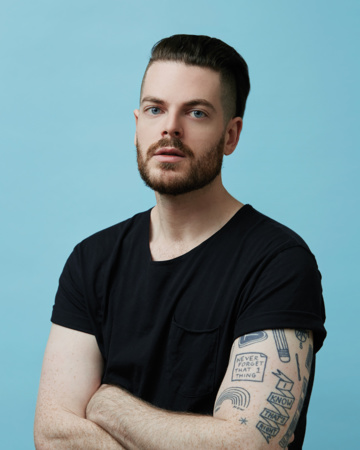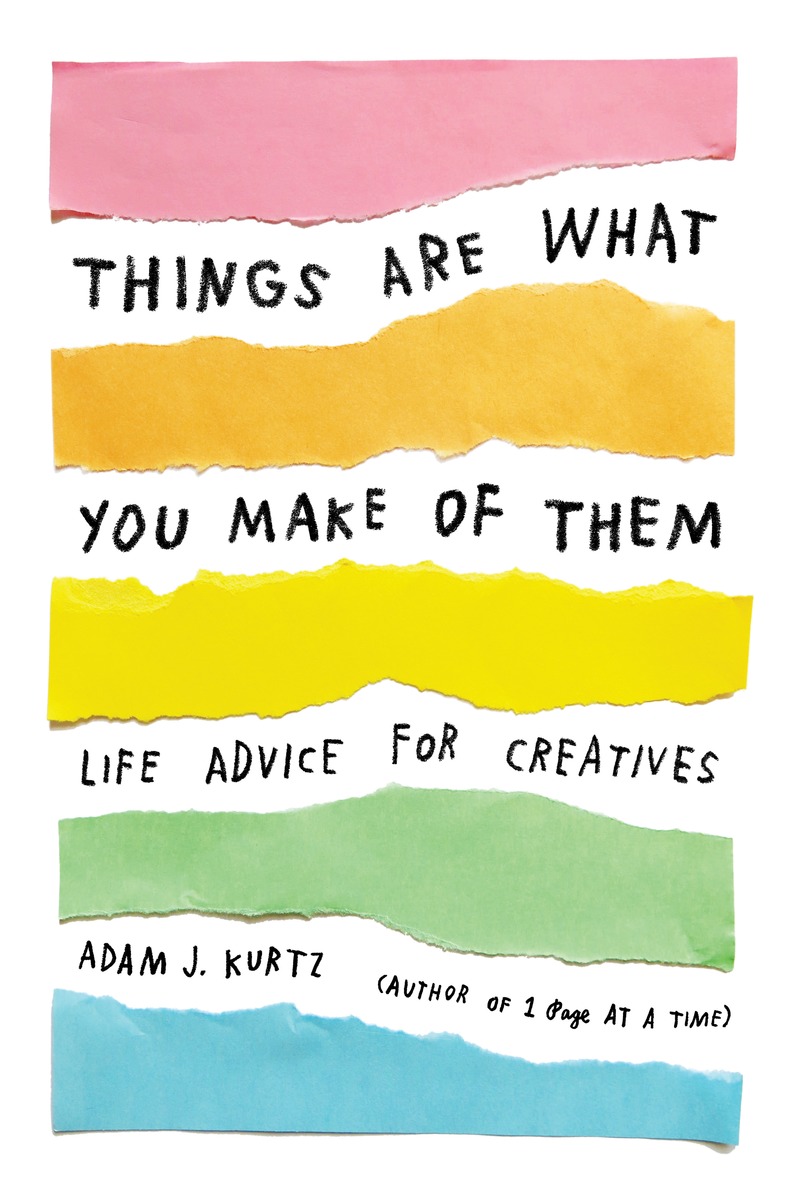Adjusting the Definition of ’Creatives’ : Artist Adam J. Kurtz on His New Book

Artist, author, and designer Adam J. Kurtz made a name for himself thanks to a unique sensibility that blends mordant wit, candid vulnerability, and warped optimism, all expressed through playful visual objects like the “I’m sorry I’m such an a**hole” balloon (NSFW, of course) and the interactive book, Pick Me Up.
Today marks the release of Kurtz’s third book, Things Are What You Make of Them: Life Advice for Creatives. A colorful book whose perforated pages are meant to be torn out and taped up wherever you need them most, Things Are What You Make of Them collects some of Kurtz’s Design*Sponge columns on topics ranging from “What to Do When You Fail” to “How to Be Yourself.”
Kurtz was kind enough to answer a few questions for us via email. Check out his thoughts on visual writing, why working for yourself isn’t always cute, and why we should adjust our perceptions of who counts as a “creative”:
Recruiter.com:Can you talk a little bit about the impetus behind the book? Where did the idea come from? Why did you feel this was a project you needed to undertake?

Adam J. Kurtz (Photo credit: Daniel Seung Lee)
Adam J. Kurtz: There are just so many things that people don’t tell you about working for yourself, whether it’s a hobby, a nights-and-weekends hustle, or full-time. What do freelancers even need? You’re supposed to work at a coffee shop? You’re supposed to Instagram your makeshift office with hashtag #freelancelife?
The book took shape over two years of working for myself full-time. I put out my second book, Pick Me Up. I expanded my own line of accessories and stationery and began wholesaling to more (and bigger) retail outlets. I released a line of dishware. I was doing all kinds of creative projects, which I love. At the same time, I was forming a legal entity for my business. I was collecting and paying sales taxes. I was sourcing production. I was hiring part-time help.
Being your own business isn’t always fun, and it definitely isn’t always cute. You tap into insecurities in a big way, and you discover new ones you didn’t know you had. This book is all about the unspoken lessons we have to learn that there isn’t necessarily a book for yet. If you need a book on invoicing, you can find one. If you need a companion for the intangibles – fear, anxiety, success and bliss – this is it.
RC: Can you talk a little bit about the format of the book? Here and in your Design*Sponge column, you trade traditional writing for a very visual approach. What do you think this visual approach has that regular text doesn’t?
AJK: This may come as a shock but … a lot of people don’t read. We’re trained in soundbites now. We get news from Twitter and we read poetry on Instagram. This is the world!
When I started these essays, it was with the knowledge that I wanted to reach a new kind of reader, one that prefers their information in sharable chunks. It’s not at all shocking that individual pages have reached far beyond into pockets of Pinterest and Tumblr – in fact, it was by design.
The book follows the visual format, making it an enjoyable and easy read. The atypical format makes some of the more blunt truths and advice easier to digest. It’s fun! It’s a little bit weird! It’s a really great gift that you can give without it being like “Here’s a self-help book for you.” All of those choices were made to keep it approachable and accessible to all kinds of readers. That’s really the core theme of all of my work.
RC: How do you hope people interact with the book? Is this something you hope people sit down and read through cover to cover? Or something that people can flip through at leisure? Both? Neither? (I, personally, found the book was most exciting when I let chance guide me through it.)

RC: The book is subtitled “Life Advice for Creatives,” but I wonder: In your mind, is this book only relevant to creatives? What, if anything, can people who don’t consider themselves creatives draw from this book?
AJK: I think our definition of “creatives” really needs adjusting. Anyone who makes anything is a creative. Entrepreneurs, chefs, stylists, writers, parents, anyone who uses creative thinking to find new solutions or accomplish tasks in their daily life – these are all creatives. This book taps into the kinds of thinking that we get hung up on, the self-doubt, procrastination, both the good and bad anxiety, working with others, reinvention … I think there’s something in here that will resonate with everyone.

